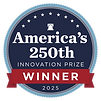Don’t put raw milk regulations out to pasture
- Madilynne Clark

- Aug 28, 2024
- 3 min read
Updated: Aug 30, 2024

I farm, homeschool, garden, bake bread, raise chickens, and make my own yogurt. It seems I’m following the fad of the homesteading hobbies. However, I’m not fully converted. I balk at the principle of drinking raw milk.
I have been known to give lectures to friends and random strangers asking me if my family drinks raw milk. I’m the person that interrupts other moms that were talking about raw milk. And when it comes to reducing raw milk regulations, I’ve told multiple people where to put that idea out to pasture. Why? Because it is dangerous, people are misinformed and labels do NOT work.
A recent foodborne illness outbreak in Idaho shows the dangers of drinking raw milk. 18 people were infected in early August by Campylobacter pathogen. 17 of the 18 individuals consumed raw milk from an Idaho dairy. A difficult time for the families affected by this outbreak, and a challenge for the dairy farmer who diligently found the pathogen’s source in a water heater, but by that time the contaminated product was already consumed.
For the better, Idaho has a low regulatory burden, but in the case of raw milk, the labeling requirement might not be enough.
My dad was a dairy veterinarian and I spent years going on farm calls. I was in the muck, playing with calves, moving cows, playing in the cottonseed piles. Through it all I was never allowed to drink raw milk. When a family friend’s young granddaughter experienced kidney failure in 2012 because of raw milk consumption, our family’s caution became understandable.
But maybe, you’ve heard raw milk could give health benefits and strengthen your immune system? That sounds great. Did you know you could also get E. Coli and your children are more likely to have severe, life-threatening kidney problems because of it?
If you drink raw milk your risk is significantly higher than if you drink pasteurized milk. Raw milk drinkers are 840 times more likely to be sickened versus pasteurized milk, 45 times more likely to be hospitalized, and it causes 96% of illnesses related to contaminated dairy products. Raw milk regulations have historically reflected this danger and made it difficult to purchase in many states.
Depending on the state, raw milk sales have been completely illegal, only available for animal food, or require cow ownership by the consumers. Over the last two decades, these regulations have softened and disappeared across the country, to the consumer's detriment.
Certain dangerous or high-risk goods should require barriers or obstacles to purchase. These barriers create a natural fence consumers must climb, hopefully gaining some degree of information before consuming the dangerous product. This caution is needed because people may be misinformed, and children and the elderly are the most vulnerable to these illnesses.
Despite knowing the dangers, many states recently removed the raw milk purchasing regulations and more states are relying on the warning label to dissuade consumers. One legislator from Louisiana said, “I figure free people drink what free people want to drink. This is still America.”
Slackening raw milk regulations ignores the risk, relying on ineffective safety labels. In a world where California’s Proposition 65 requires over 800 chemicals and ingredients to be labeled as known carcinogens, any safety label seems pointless. Aggravating the situation, some individuals are more likely to consume a product or engage in a practice when a safety warning is issued.

Imagine labels as wolves versus puppies. Though rare, wolves will eat you if given the chance. Puppies are common, but their bite is rarely, if ever, harmful. Labeling practices should focus on identifying wolves, but our current practices identify everything as a wolf. This generalization creates useless labels, making dangerous products more threatening.
To our misfortune policymakers have over-warned and under-educated, leaving us vulnerable to wolves hiding among the puppies. Raw milk has the potential of being a wolf. Consumer safety would be better protected by discretionary labeling versus a blanket approach, but that possibility no longer exists.
Generally, we favor reducing regulations but in the case of public safety, targeted and specific protections can be worthwhile. It’s time to rip the label off the raw milk situation and realize that labels will prove ineffective at informing consumers. Health risks remain, however, and consumers need some purchasing obstacle that will encourage them to obtain important information, before milking a potentially dangerous fad.







Comments